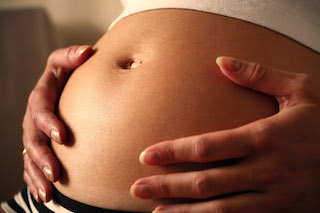10 Risks Related To Geriatric Pregnancy

10 Risks Related To Geriatric Pregnancy
Pregnancy is a life-changing event filled with excitement and joy, but it also comes with significant physiological changes and challenges. When pregnancy occurs after the age of 35, it is often termed as a geriatric pregnancy or an advanced maternal age pregnancy. While this term may seem outdated, it reflects an important consideration in modern reproductive health: as women age, pregnancy can carry more risks, both for the mother and the baby.
In recent years, the trend of delaying childbirth has grown significantly. Many women choose to focus on their careers, personal goals, or other life circumstances before starting a family. While advancements in fertility treatments have made it possible for many women to conceive later in life, it is essential to be aware of the associated risks. This article will explore the risks of geriatric pregnancy, why these risks increase with age, and what women can do to ensure a healthy pregnancy.
Geriatric pregnancy
Geriatric pregnancy refers to pregnancy in women aged 35 and older. The primary reason this age is considered a threshold is due to the natural decline in fertility that occurs with age. As women age, their ovarian reserve decreases, and the quality of the remaining eggs diminishes. This can lead to increased difficulty in conceiving and higher risks for complications during pregnancy.
While many women over 35 go on to have healthy pregnancies and babies, the probability of facing certain health issues does rise as maternal age increases. It’s crucial to understand these risks and the importance of proactive care when planning for or experiencing a geriatric pregnancy.
Risks
Women over 35 face various pregnancy-related risks that increase with age. Below are some of the most common and significant risks associated with geriatric pregnancy.
1) Declining fertility
The biggest challenge for women over 35 is declining fertility. Women are born with a finite number of eggs, and the quantity and quality of these eggs decrease as they age. By the time a woman reaches her mid-thirties, the likelihood of ovulating an egg that is genetically normal starts to decline. This can make conception more difficult and increase the likelihood of needing fertility treatments, such as in vitro fertilisation.
Additionally, ovulation may become more irregular with age, further reducing the chances of getting pregnant. While fertility declines gradually in a woman’s early 30s, the decrease becomes more pronounced after 35.
2) Chromosomal abnormalities
As maternal age increases, the risk of chromosomal abnormalities in the foetus also rises. Down syndrome, caused by an extra copy of chromosome 21, is the most well-known chromosomal condition associated with geriatric pregnancy. The risk of down syndrome increases significantly with age:
-
-
-
- At age 25, the risk of having a baby with Down syndrome is approximately 1 in 1,250
- By age 35, the risk increases to 1 in 350
- At age 40, the risk is approximately 1 in 100
- By age 45, the risk increases to 1 in 30
-
-
In addition to Down syndrome, there is also a higher risk of other genetic conditions such as trisomy 18 and trisomy 13, which can lead to severe developmental issues or miscarriage.
3) Higher likelihood of miscarriage
The risk of miscarriage is another concern for women experiencing a geriatric pregnancy. Miscarriage rates increase with age due to the higher likelihood of chromosomal abnormalities in the embryo. Miscarriage can occur for various reasons, but the most common cause is genetic abnormalities that prevent the pregnancy from progressing.
For women under 35, the risk of miscarriage is approximately 15%. For women aged 35 to 39, this risk rises to around 20-25%, and by the time a woman reaches age 40, the risk of miscarriage can be as high as 40%.
4) Gestational diabetes
Gestational diabetes is a type of diabetes that develops during pregnancy and typically resolves after childbirth. However, women over 35 are at an increased risk of developing gestational diabetes due to changes in how the body processes insulin as it ages. Gestational diabetes can lead to complications such as:
-
-
-
- Large birth weight, which can result in difficulties during labor and delivery
- Preterm birth
- Increased risk of developing type 2 diabetes later in life
-
-
Proper management of blood sugar levels through diet, exercise, and sometimes medication is crucial in reducing the risks associated with gestational diabetes.
5) Preterm birth and low birth weight
Preterm birth, defined as delivery before 37 weeks of gestation, is more common in geriatric pregnancies. Preterm babies are at higher risk for complications such as breathing difficulties, feeding challenges, and developmental delays. In addition to preterm birth, women over 35 are also at increased risk of delivering babies with low birth weight.
Low birth weight can result from placental insufficiency, where the placenta is unable to provide sufficient nutrients to the developing fetus, leading to slower growth. Babies born with low birth weight are more vulnerable to infections, breathing problems, and long-term health issues.
6) Increased risk of preeclampsia
Preeclampsia is a pregnancy complication characterised by high blood pressure and signs of damage to organs, most often the liver or kidneys. It occurs after 20 weeks of pregnancy and can lead to severe complications for both the mother and baby if left untreated. Women over 35 are at higher risk of developing preeclampsia, particularly if they have a history of high blood pressure or other underlying health conditions.
Symptoms of preeclampsia include swelling, sudden weight gain, headaches, and changes in vision. Treatment for preeclampsia usually involves close monitoring, medication, and, in some cases, early delivery of the baby.
7) C-Section delivery
Women over 35 are more likely to require a cesarean section, either due to complications that arise during labor or as a preventive measure due to pre-existing conditions. Factors such as preeclampsia, gestational diabetes, and the baby’s position can increase the likelihood of a C-section.
While C-sections are generally safe, they come with their own set of risks, including a longer recovery time, increased risk of infection, and potential complications in future pregnancies.
8) Placental complications
Placenta previa and placental abruption are 2 types of placental complications that are more common in geriatric pregnancies. Placenta previa occurs when the placenta covers part or all of the cervix, potentially causing severe bleeding during labor. Placental abruption is when the placenta detaches from the uterine wall before delivery, leading to a medical emergency that requires immediate attention.
Both conditions can pose serious risks to the mother and baby, including preterm birth, low birth weight, and severe maternal bleeding.
9) Labor complications
The likelihood of experiencing complications during labor also increases with age. Women over 35 may have longer or more difficult labors, sometimes leading to medical interventions such as the use of forceps, vacuum-assisted delivery, or C-sections. Advanced maternal age can also increase the chances of **induced labor** if complications arise or if the pregnancy goes past the due date.
10) Postpartum complications
After delivery, women over 35 may face a higher risk of postpartum complications such as postpartum haemorrhage and postpartum depression. Additionally, recovery from a C-section may be more difficult as the body takes longer to heal from surgical procedures in older women.
How to mitigate risks in geriatric pregnancy
While the risks of geriatric pregnancy are real, many women go on to have healthy pregnancies and babies by taking certain precautions and receiving appropriate medical care. Here are some tips for mitigating risks and optimising your chances for a healthy pregnancy:
1) Preconception counselling: If you are planning to conceive after 35, it’s a good idea to consult with your healthcare provider beforehand. They can assess your health, screen for potential risk factors, and help you prepare for pregnancy.
2) Regular prenatal care: Once pregnant, regular prenatal care is essential for monitoring your health and the baby’s development. Your doctor will conduct screenings for gestational diabetes, high blood pressure, and other potential complications.
3) Healthy lifestyle choices: Eating a balanced diet rich in nutrients, staying physically active, and avoiding smoking and alcohol can improve your chances of a healthy pregnancy. Managing stress and getting adequate rest are also important for maintaining both physical and mental well-being.
4) Consider genetic testing: Genetic testing and counselling can help you understand the risks of chromosomal abnormalities and make informed decisions about your pregnancy. Non-invasive prenatal testing and amniocentesis are common options for assessing the risk of genetic conditions in the baby.
5) Monitor blood pressure and blood sugar: Keeping a close eye on your blood pressure and blood sugar levels can help detect issues such as preeclampsia and gestational diabetes early on, allowing for prompt intervention.
6) Stay informed and prepared: Educating yourself about the potential risks and complications associated with geriatric pregnancy can help you stay proactive and make informed choices throughout your pregnancy journey.
Make an informed decision
While the risks of geriatric pregnancy are higher compared to younger pregnancies, many women over 35 can have healthy and successful pregnancies with proper care. Understanding the challenges, seeking medical guidance, and making lifestyle adjustments can greatly improve the outcome for both mother and baby.



